DLBA Naval Architects unveils AI-powered superyacht concept
Tempo is not about autonomy for autonomy’s sake, but rather the things that autonomy enables…
In March 2020, DLBA Naval Architects unveiled the 58m AI-powered superyacht concept Tempo. As Joshua Wallick explains, Tempo is not about autonomy for autonomy’s sake, but rather the things that autonomy enables.
Technologies
One of the key pillars of Tempo –and the subject of this article – is how the Industrial Internet of Things (IIoT) is powering mechanical and electrical system health monitoring and automation, and what that yields for owners. The sea is a harsh mistress, and superyachts are complex systems prone to failures in the best of conditions. Some of these failures are repeatable, common occurrences (for example loss of compression in a diesel engine) while others are rare or even unique. Some failures are identified by obvious signals from a sensor while other failures are complex and can only be understood by synthesising indirect sensor observations. In the past, the wide variety of possible failures necessitated human crew be available to intervene and correct casualty conditions.
When people talk about ‘autonomy’ or ‘expert systems’ or ‘AI’, they are talking about algorithms. Algorithms, combined with the large-scale machine-to-machine (M2M) communication, allow Tempo to automatically handle faults during operation and in some cases to prevent those faults from ever occurring in the first place. The heart of Tempo's improved engineering reliability is an enhanced, three-stage Condition Based Maintenance+ (CBM+) capability that utilises a combination of rules-based machine learning and model-based reasoning.
Rules-based machine learning
Rules-based machine learning (ML) enhances traditional failure trend analysis. With machine learning, the autonomous ‘engineer’ can rapidly process thousands of data points to identify early warning signs of system failure and respond in real time. Additionally, this technology includes learning algorithms that make it possible for the controller to create its own rules over time as it identifies correlations between temperature, vibration, pressure and other sensor inputs that presage failure modes in ways never conceived of by human operators.
Model-based reasoning
Reliance on rules-based ML alone is a poor start for a new vessel type – large data sets needed to train the AI just is not available upon first commission. That is why Tempo also incorporates model-based reasoning (MBR). Unlike other forms of fault detection and management, MBR does not depend upon large data sets and hundreds of hours of run time. Yet, because of MBR, Tempo can anticipate and manage novel failure modes not previously experienced, not identified during design and even not directly observed by instrumented devices.
MBR uses first-principles models of the interconnected mechanical and electrical systems – a digital twin of the on-board systems – to predict sensor responses to nominal systems commands or, when performing diagnosis, to test hypotheses. When expected sensor responses do not match nominal values, MBR looks to identify the most probable failure scenarios in which the expected responses for that scenario most closely match the actual measured values. Within the MBR solution, the reasoning executive keeps track of candidate solutions for both fault diagnosis and/or fault handling, generates new hypothesised solutions, simulates the follow-on effects of any hypothesised intervention and continually checks whether the currently selected strategy satisfies fault-handling goals. Because MBR used first-principle models to game-out multiple competing/cascading scenarios in real-time it is able to go ‘off script’ and respond to novel/emergent situations in a way that a straight-stick ML solution could not.
Benefits to owners
Autonomous prognosis
The first benefit to Tempo’s owners that promotes increased operational availability is CBM+ prognosis. This is the ability of the system to autonomously predict component, assembly and/or system failures. This has the effect of:
- Extending the remaining useful life of installed systems by pro-actively scheduling needed maintenance while at the same time eliminating early or unnecessary maintenance activities
- Informing autonomous mitigation of impending faults, allowing the autonomous mitigation to devise and implement machinery and/or electrical configurations that minimise the use of failure-prone components
- Improving the awareness of human operators/bridge watch standers by informing them of impending faults
Autonomous diagnosis
The second stage of Tempo’s CBM+ solution is autonomous diagnosis. This is the ability to use real-time health diagnosis to detect existing faults. Together, prognosis and diagnosis produce Tempo’s CBM+ situational awareness of its own internal world model. CBM+'s situational awareness is used by the MBR reasoning executive to identify the impact of current and future failures on key ship systems, and to anticipate the consequences and benefits of possible automated interventions.
Autonomous mitigation
Once the root cause of failure has been identified and analysed, CBM+’s third stage, autonomous mitigation, recommends (or, if permitted, executes) the autonomous mitigation measures that reconstitute degraded performance. This may involve reconfiguring the propulsion system, engaging redundant systems, utilising bypass configurations, or simply minimising the use of vulnerable sub-systems.
Novel maintenance strategies
Because ‘autonomous’ doesn't mean unmanned, our Tempo project includes a careful examination of how human-machine teaming between owners, reduced crew complements, and on- and off-board systems can combine to promote safety, efficiency and reliability. Self-adaptive health monitoring solutions like our CBM+ will certainly reduce the need for underway crew to manage repairs. Coupled with Tempo-organic robotic inspection remotes, on-board additive manufacturing capability, shore-based casualty control centres and fly-away campaign maintenance teams; these AI- and data-driven CBM+ technologies all contribute to a significantly increased availability of the yacht to its owners – which, after all, is what it’s all about.
NEW: Sign up for SuperyachtNewsweek!
Get the latest weekly news, in-depth reports, intelligence, and strategic insights, delivered directly from The Superyacht Group's editors and market analysts.
Stay at the forefront of the superyacht industry with SuperyachtNewsweek
Click here to become part of The Superyacht Group community, and join us in our mission to make this industry accessible to all, and prosperous for the long-term. We are offering access to the superyacht industry’s most comprehensive and longstanding archive of business-critical information, as well as a comprehensive, real-time superyacht fleet database, for just £10 per month, because we are One Industry with One Mission. Sign up here.
Related news
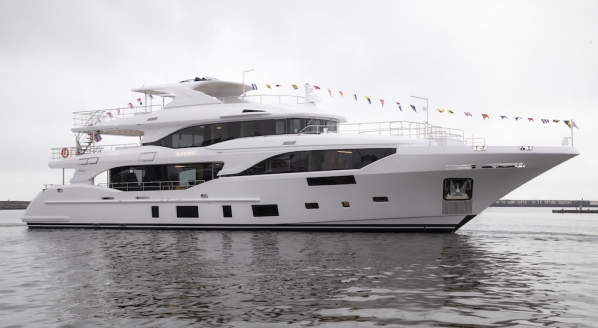
Benetti launches 35m Sunrise
Sunrise is the ninth unit of Benetti's Mediterraneo 116 series to be under construction
Fleet
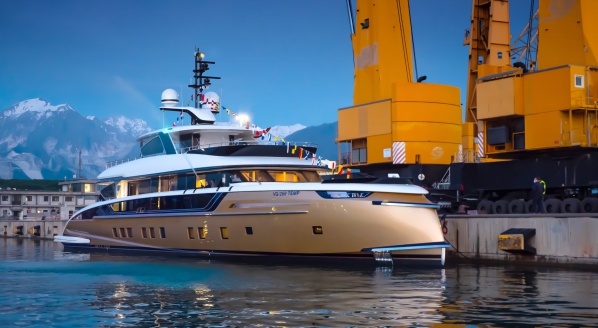
Dynamiq launches 41m Stefania
The Italian shipyard has announced the launch of its flagship GTT 135
Fleet
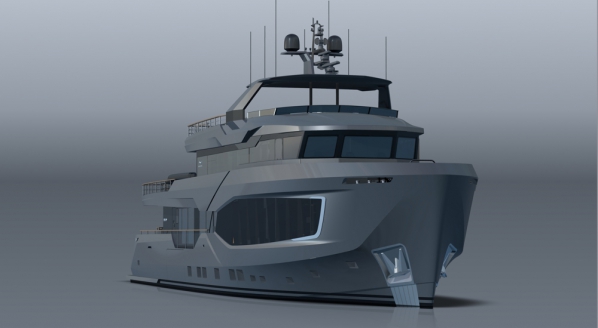
Numarine sells first 37XP model
The first unit has already entered the final stages of construction at the Turkish shipyard
Fleet
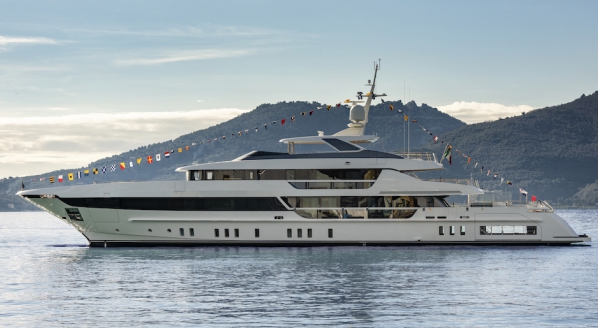
Sanlorenzo launches fifth 52Steel
With three other 52Steel units under construction, the model remains a strong performer for Sanlorenzo
Fleet
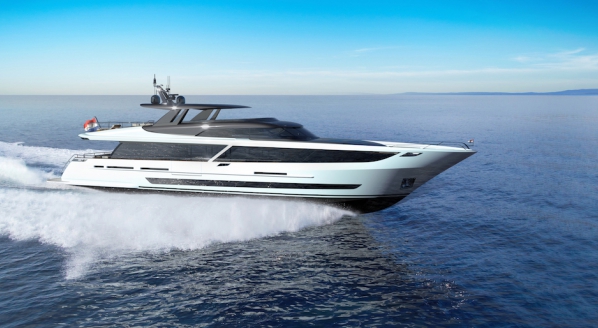
33m Blue Jeans begins construction
Van der Valk begins construction of 33m custom superyacht. It now has two ongoing projects in this size range
Fleet

Let’s face it, innovation is hard
But it is also essential, says John Venables, president & CEO of Naiad Dynamics
Technology
Related news
Benetti launches 35m Sunrise
5 years ago
Dynamiq launches 41m Stefania
5 years ago
Numarine sells first 37XP model
5 years ago
Sanlorenzo launches fifth 52Steel
5 years ago
33m Blue Jeans begins construction
5 years ago
Let’s face it, innovation is hard
5 years ago
NEW: Sign up for
SuperyachtNewsweek!
Get the latest weekly news, in-depth reports, intelligence, and strategic insights, delivered directly from The Superyacht Group's editors and market analysts.
Stay at the forefront of the superyacht industry with SuperyachtNewsweek




